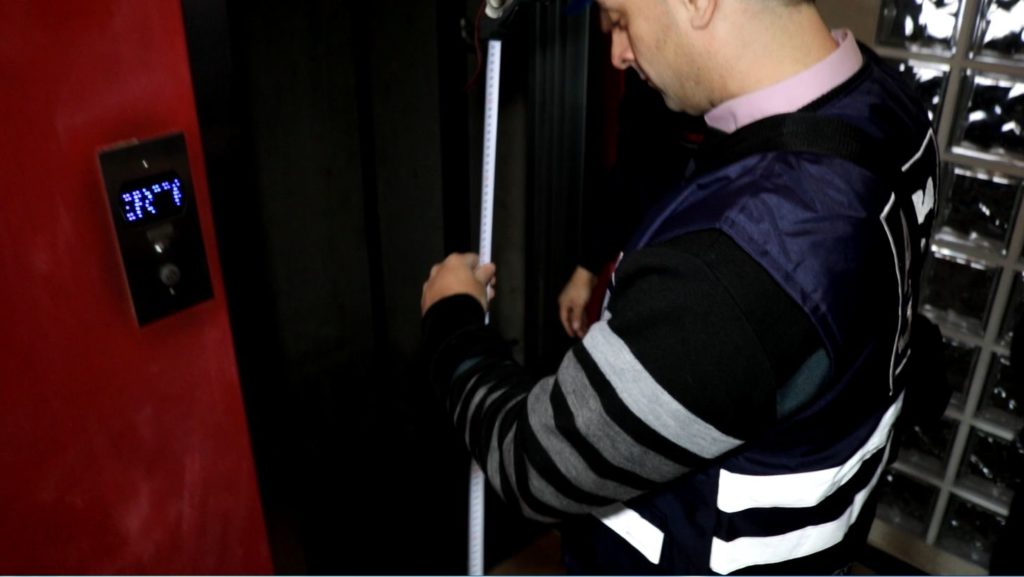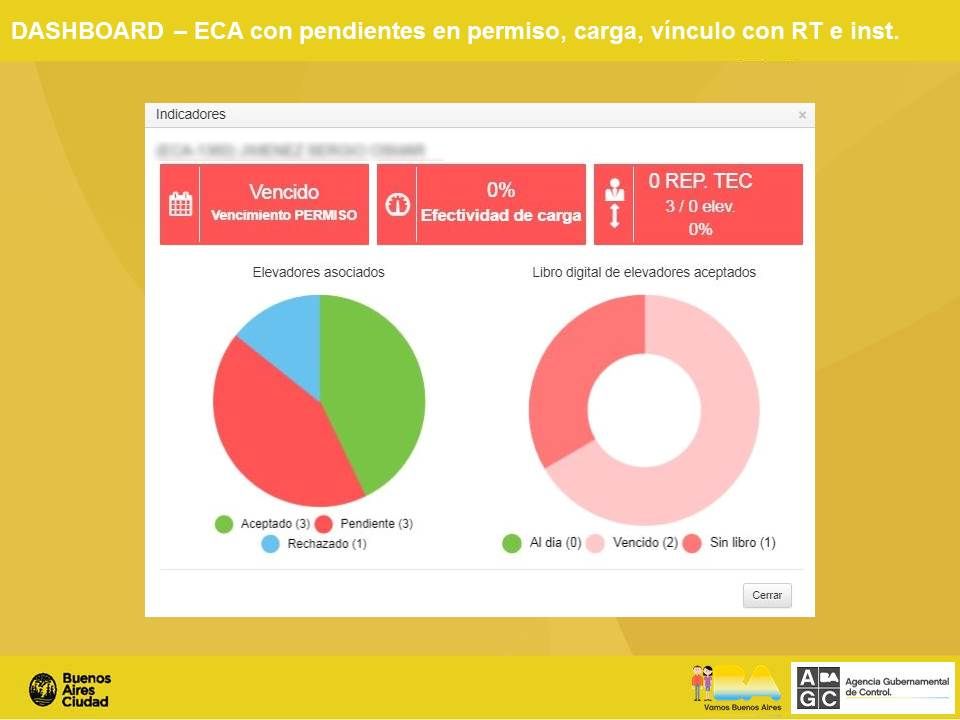With a conciliatory tone, and wishing to clear up doubts regarding the subject of public knowledge: change of periodicity in the conservation (control + maintenance) of elevators, Revista del Ascensor was invited by the authorities of DGFYCO-AGC to learn their points of view and clear up misunderstandings in order to help bringing positions closer.
Lisandro Dragani, assistant manager of the Elevator Department at the DGFYCO – AGC (Government Control Agency) clearly understands that the measure started a debate and produced a defensive attitude and initial rejection of the elevator contractor companies wich are represented by the elevator chambers who raised their complaints at the DGFYCO (General Construction Works Control). “This reaction is absolutely understandable, says Dragani and very human too”. That’s why DGFYCO is willing to communicate maintenance companies the issues they are adressing and the way they are approaching them so to solve them in the most convenient way for all parties: government, companies and the public.
“”The answer to the question of spacing elevator control it’s short”said Lisandro Dragani, unambiguously. “The issue was put in agenda and it is being analized to achieve the best solution. International regulations have been rewed and specialists have been consulted .A course has been determined trying to reduce the taxpayer expenses level and at the technical area we are working on that sense without neglecting security.”.
“To do so, we have call the trade chambers of Buenos Aires, the City Fire Fighter Department, the INTI (National Institute on Industrial Technology) , independent experts in the area, and the professional Bodies of Council. We have consult them all and they all had the opportunity to express their positions”.
Current regulations use a very broad and non-specific criterion, they take the same conservation criteria for a single-family house that for an 8-story building, this one it is one of the counterpoints to review. In Spain the single housing family elevator review is carried out every four months. “Let’s go to another example, comparing a building PH type with two functional units with a 14-story building , should they be controlled with the same frecuency? asks Dragani. “According to the current regulations, it should be, and he leaves the question in suspense to create the awareness of a need.
Then it would be neccessary to think about issues considering the varied destinations and uses of facilities. Some consider to inspect more often old elevator systems and less frequently the new ones. Some say that altough brand new elevators are suposed to have no failures they don’t get any certification for their installation and that would made them suitable to be inspected alike. Although currently elevators installations are not yet required to be certified, they are inspected in order to check they match with the presented plans and they meet the safety regulationes and that works as a kind of certification. It is known that the certification test is an item that exists in the Secretary of Commerce agenda to be adressed in a short time.
Conservation is understood as two parts: control + maintenance along the time, which is the other variable. The idea is to dilate the time between the controls (task of the technical representative) or maintenance (greasing, cleaning, etc …) or both, in the
cases when this “delay” is feasible
It is important to highlight the progress of the work carried on each out in the different meetings, collecting experiences and technical knowledge. As a result, four main parameters on elevator facilities were determined to be considerate to determine in
each case wether facilities are suitable to allow the delay of the control or not.
1-Use of the building: It has to do with the activity the building is devoted to. If the bulding is included within the Law of criticality 2553 and therefore must guarantee accessibility , those buildings should be discarded of the extendied period of conservation. In this critically law, critical uses and activities are established. An interesting fact is that there are 920 reported locations holding public buildings and 2939 elevators linked to these locations..
2- Traffic study: This parameter will be related to the potential wear the installation would eventually have and that is, if the amount of facilities is projected according to a “model” demand. If the examination throws a undersized number of elevators, those related facilities will be excluded from spacing, since it is understood that they will have higher demand, therefore higher wear.
3-Technical characteristics: We have a modern park and a old-fashioned park, in the city. Then the technical
characteristics will result a relevant factor at the time of the analysis.
Among the issues to take into consideration will be type of landing and cabin doors,type of control board, etc. The elevators that do not meet the characteristics that are determined will be excluded.
4-State of maintainence: A qualified professional in the field will make the assessment of the state of conservation at the time the verification is carried out. We still haven’t defined wether it will be a professional outside the company or one inside it.
So, in conclusion, the elevators which could access to a extension of the period between conservations would be those that are not installed in buildings or activities considered critic, those which do not suffer great wear because of a wrong sizing calculation or one in relation with the traffic the served, those which have specific technical characteristics and because of their condition are suitable to be controlled through a wider space of time.
“Anyway this extension period will be subject to review from time to time. Dragani says all this selected ítems arise from meetings with the chambers, the experts, the City Firemen and with INTI professionals. “We are not improvising. ”
The positive side
Questions to Arq. Lisandro Dragani (Assistant manager of the Elevator Department at the DGFYCO – AGC)
Revista del Ascensor:- Regarding the Predictive maintenance, at this time it doesn’t exist anything to force the elevator owner to change the elevator wires after a period of time. The same happens with other spare parts that should be replaced automatically without hesitation.
Deputy DGFYCO Elevators: -In that sense the discussion about the extensión of the control time will promote positive actions. We suppose many elevator owners will tend to improve their elevator maintenance to avoid the frecuent company controls wich will make them save money and have a good condition elevator. It’s a win-win solution: while the elevator companies increase their work updating the elevators and making them safty and confortable, the users get a safty elevator and the government achieves its goal which is to get a secure elevator fleet for the citizens.
Going further with this question, companies must report all the news about changes and updatings on the equipments and reporte every change within the digital bookl, this will allow DGFYCO to determine or have an idea of the life cycle of spare parts and the need of thier replacement…
R. del Ascensor: – Is there a precise idea when they will start to implement this measure?
Deputy DGFYCO Elevators: – We are close to do it, there is a lot of work done and the decision will be made in a rational way, according to the line of work entrusted: the reduction of the expenses coasts.
“Since the creation of Registered Elevators program we have achieved a day by day increasing amount of elevators properly supervised by a conservation company. Users who have doubts are free to find out the elevator condition through a QR code app located within unit, with the maintenance company information and the controles performed”.
Ricardo Pedace (AGC EXECUTIVE DIRECTOR)







